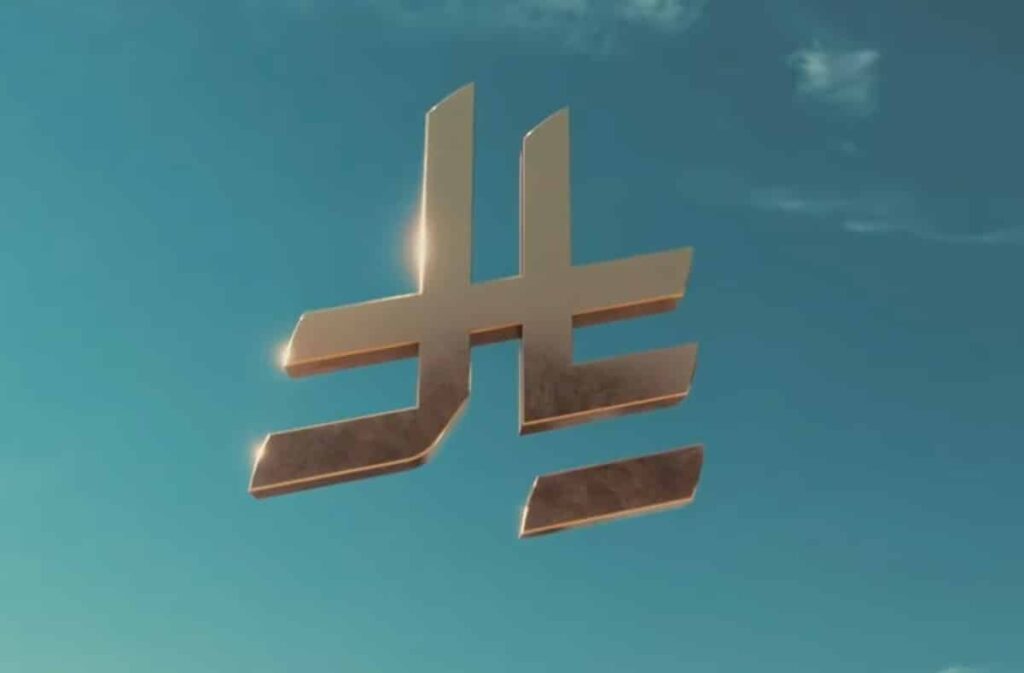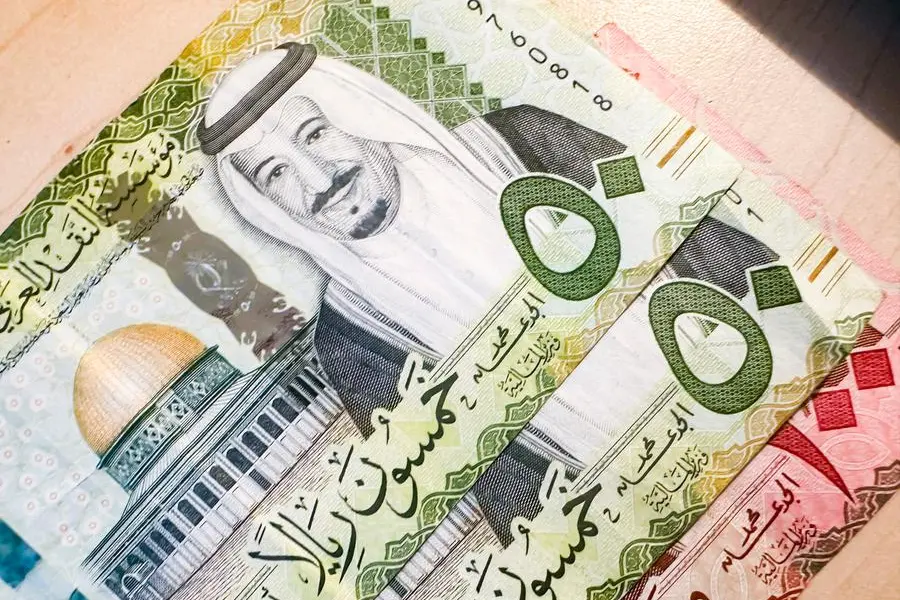In a significant move to bolster its financial identity on both regional and international stages, Saudi Arabia has unveiled an official symbol for its national currency, the riyal. This initiative, approved by King Salman bin Abdulaziz Al Saud on February 20, 2025, aims to enhance the riyal’s presence in global financial systems and align with the Kingdom’s Vision 2030 objectives. The decision reflects Saudi Arabia’s commitment to strengthening its economic standing and cultural influence, ensuring that the riyal becomes more recognizable worldwide.
Design and Cultural Significance

The newly introduced symbol is a testament to Saudi Arabia’s rich cultural heritage. Crafted with inspiration from Arabic calligraphy, it features the Arabic letters “ر” (Ra), “ي” (Ya), and “ل” (Lam), artistically representing the word “Riyal.” This design not only pays homage to traditional art forms but also ensures the symbol’s modernity and relevance in today’s financial landscape. The Saudi Central Bank (SAMA) emphasized that the symbol was developed to the highest technical standards, reflecting the Kingdom’s commitment to blending tradition with innovation. The new symbol is expected to be widely used in banking, digital transactions, financial statements, and international trade to enhance the riyal’s visibility and credibility.
Implementation and Global Integration
The rollout of the riyal symbol will be gradual, ensuring seamless integration into all financial and commercial transactions. SAMA is coordinating with relevant entities to facilitate this transition, aiming to make the symbol a recognizable representation of the Saudi riyal in both local and international contexts. Governor Ayman Al-Sayari highlighted that this initiative is designed to promote national identity, strengthen cultural belonging, and position the Saudi riyal prominently among major global currencies, particularly within the G20 economic framework.
This move comes at a time when Saudi Arabia is focusing on modernizing its financial sector to align with global best practices. The introduction of the riyal symbol is expected to ease international transactions and provide a distinct identity to the currency, much like the dollar ($), euro (€), and yen (¥) symbols. It also represents a strategic step in digital finance, ensuring that Saudi Arabia is well-prepared for the growing influence of cashless transactions and electronic financial systems.
Collaborative Effort
The development of the riyal symbol was a collaborative endeavor involving multiple Saudi institutions. Key contributors included the Ministry of Culture, the Ministry of Media, and the Saudi Standards, Metrology, and Quality Organization. Their combined efforts ensured that the symbol embodies the Kingdom’s cultural essence while meeting international standards. Governor Al-Sayari extended his gratitude to these entities for their pivotal roles in bringing this project to fruition. The collaborative approach underscores the importance of a unified national identity in economic and cultural representation, setting a precedent for future initiatives aimed at strengthening Saudi Arabia’s global influence.
Historical Context of the Saudi Riyal
The Saudi riyal has been the official currency of Saudi Arabia since its establishment in 1932. Over the decades, the riyal has undergone various transformations, both in design and value. Notably, since 1986, the riyal has been pegged to the US dollar at a fixed exchange rate of 3.75 riyals per dollar. This peg has provided stability to the currency, facilitating international trade and investment. The introduction of a unique symbol further strengthens the riyal’s credibility and distinction in the financial markets.
Historically, currency symbols have played a significant role in establishing a nation’s financial sovereignty. Countries like the United States, the United Kingdom, and Japan have leveraged their currency symbols to create a sense of economic strength and global recognition. Saudi Arabia’s decision to introduce a riyal symbol follows a similar path, ensuring that its currency is instantly identifiable in global financial transactions.
Vision 2030 and Economic Diversification
The introduction of the riyal symbol aligns seamlessly with Saudi Arabia’s Vision 2030—a strategic framework aimed at reducing the Kingdom’s dependence on oil and diversifying its economy. By enhancing the global recognition of its currency, Saudi Arabia aims to attract foreign investments, boost tourism, and establish itself as a hub for international business. The new symbol serves as a visual representation of these ambitions, signaling to the world the Kingdom’s commitment to economic reform and cultural renaissance.
As part of Vision 2030, Saudi Arabia is making substantial investments in technology, infrastructure, and financial innovation. The riyal symbol is expected to contribute to these efforts by strengthening consumer confidence, facilitating smoother transactions in both physical and digital formats, and reinforcing the Kingdom’s role as a key player in international trade and finance. The symbol’s introduction is also expected to have positive effects on banking, e-commerce, and financial technology (fintech) industries, making it easier for businesses and consumers to engage in transactions using the riyal.
Global Financial Implications
With the riyal’s new symbol, Saudi Arabia is poised to strengthen its position in the global financial arena. A distinct and recognizable currency symbol can enhance the riyal’s visibility in international markets, making it more accessible to traders, investors, and global financial institutions. This move is expected to facilitate smoother financial transactions and promote the riyal as a stable and reliable currency for international dealings.
Furthermore, a clear and distinguishable currency symbol can improve financial literacy and convenience for users. Businesses, investors, and tourists will find it easier to identify and use the riyal in their financial dealings, which may encourage greater economic participation and investment in Saudi Arabia. The adoption of the symbol in digital payment platforms, stock markets, and financial institutions will further solidify its presence in the global economy.
Challenges and Future Outlook
Despite the positive reception, the introduction of a new currency symbol comes with challenges. Businesses, financial institutions, and digital platforms will need time to update their systems and integrate the symbol into their operations. SAMA has assured that it will provide the necessary support and guidance to ensure a smooth transition.
Additionally, global recognition will require consistent branding and marketing efforts. Saudi Arabia may launch awareness campaigns and collaborate with international financial institutions to promote the symbol’s usage. Ensuring that the riyal symbol is widely adopted in both local and global financial systems will be key to its success.
Looking ahead, the introduction of the riyal symbol is just one of many steps Saudi Arabia is taking to modernize its financial sector. As the Kingdom continues to push forward with its economic transformation, initiatives like this will play a crucial role in establishing Saudi Arabia as a leader in global finance.
Conclusion
The unveiling of the Saudi riyal symbol marks a historic milestone in the Kingdom’s journey toward economic diversification and cultural affirmation. By intertwining traditional Arabic artistry with modern design principles, Saudi Arabia is not only preserving its rich heritage but also projecting its vision for a prosperous and interconnected future. As the symbol becomes integrated into financial systems worldwide, it stands as a testament to the Kingdom’s evolving identity and its aspirations on the global stage.
This move is expected to strengthen the riyal’s position in international markets, enhance Saudi Arabia’s economic identity, and contribute to the nation’s ambitious Vision 2030 goals. With the new symbol in place, the Saudi riyal is set to become more prominent, reinforcing the Kingdom’s growing influence in the global financial landscape.
Saudi Arabia Acquires Majority Stake in Olam’s Agribusiness for $1.78 Billion



